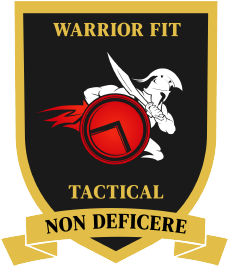
Training Around Injuries: Focus on What You Can Do
Introduction
In the world of fitness and sports, injuries are an unfortunate reality. Whether you’re a seasoned athlete, a dedicated gym-goer, or simply someone trying to stay active, the risk of injury is always present. However, the key to maintaining your physical progress and mental well-being during these times lies in your ability to adapt and focus on what you can do, rather than dwelling on what you can’t. In this blog post, we’ll explore the art of training around injuries and how a positive mindset can be your greatest asset.
1. Listen to Your Body
One of the first lessons in training around injuries is learning to listen to your body. Pain is your body’s way of communicating that something is wrong. Ignoring it or pushing through it can lead to more severe injuries. When you experience pain or discomfort, it’s crucial to consult with a healthcare professional to get a proper diagnosis and treatment plan.
2. Modify Your Training Routine
Once you have a clear understanding of your injury, it’s time to adapt your training routine accordingly. This might mean avoiding exercises that exacerbate the injury or modifying them to reduce strain. For example, if you have a knee injury, you can switch from high-impact exercises like running to low-impact activities like swimming or cycling.
3. Focus on Strength and Mobility
Injuries can be a perfect opportunity to focus on building strength and improving mobility in other parts of your body. Even if a particular limb is injured, you can often work on other areas that are unaffected. Strengthening your core, for instance, can benefit many different types of injuries by providing better overall stability.
4. Explore Alternative Workouts
Don’t be afraid to explore alternative workouts that don’t aggravate your injury. Yoga, Pilates, and tai chi are excellent options for maintaining fitness and flexibility while minimizing stress on injured areas. These practices can also help with mental relaxation and stress relief during the healing process.
5. Prioritize Recovery and Rehabilitation
Recovery and rehabilitation are paramount when dealing with injuries. Follow your healthcare professional’s advice diligently and engage in any prescribed physical therapy. Prioritize sleep, nutrition, and stress management, as they all play critical roles in the healing process.
6. Develop a Positive Mindset
Perhaps the most important aspect of training around injuries is developing a positive mindset. Instead of dwelling on the limitations your injury imposes, focus on the opportunities it presents. Use this time to work on mental toughness, goal setting, and visualization techniques. Remember that setbacks are part of any fitness journey, and your ability to adapt and persevere is a testament to your dedication.
7. Seek Support and Guidance
It’s essential to surround yourself with a support system during your recovery journey. Friends, family, and training partners can provide emotional support and motivation. Additionally, consider seeking guidance from a coach or trainer who specializes in working with individuals recovering from injuries. They can help you create a customized training plan and keep you accountable.
Conclusion
Training around injuries is a challenging but surmountable obstacle in your fitness journey. By listening to your body, modifying your routine, focusing on strength and mobility, exploring alternative workouts, prioritizing recovery, nurturing a positive mindset, and seeking support and guidance, you can not only recover from injuries but also come back stronger than before. Remember that it’s not about what you can’t do; it’s about what you can do, even in the face of adversity. Your journey toward better health and fitness is a marathon, not a sprint, and with the right mindset, you can overcome any obstacle in your path.
